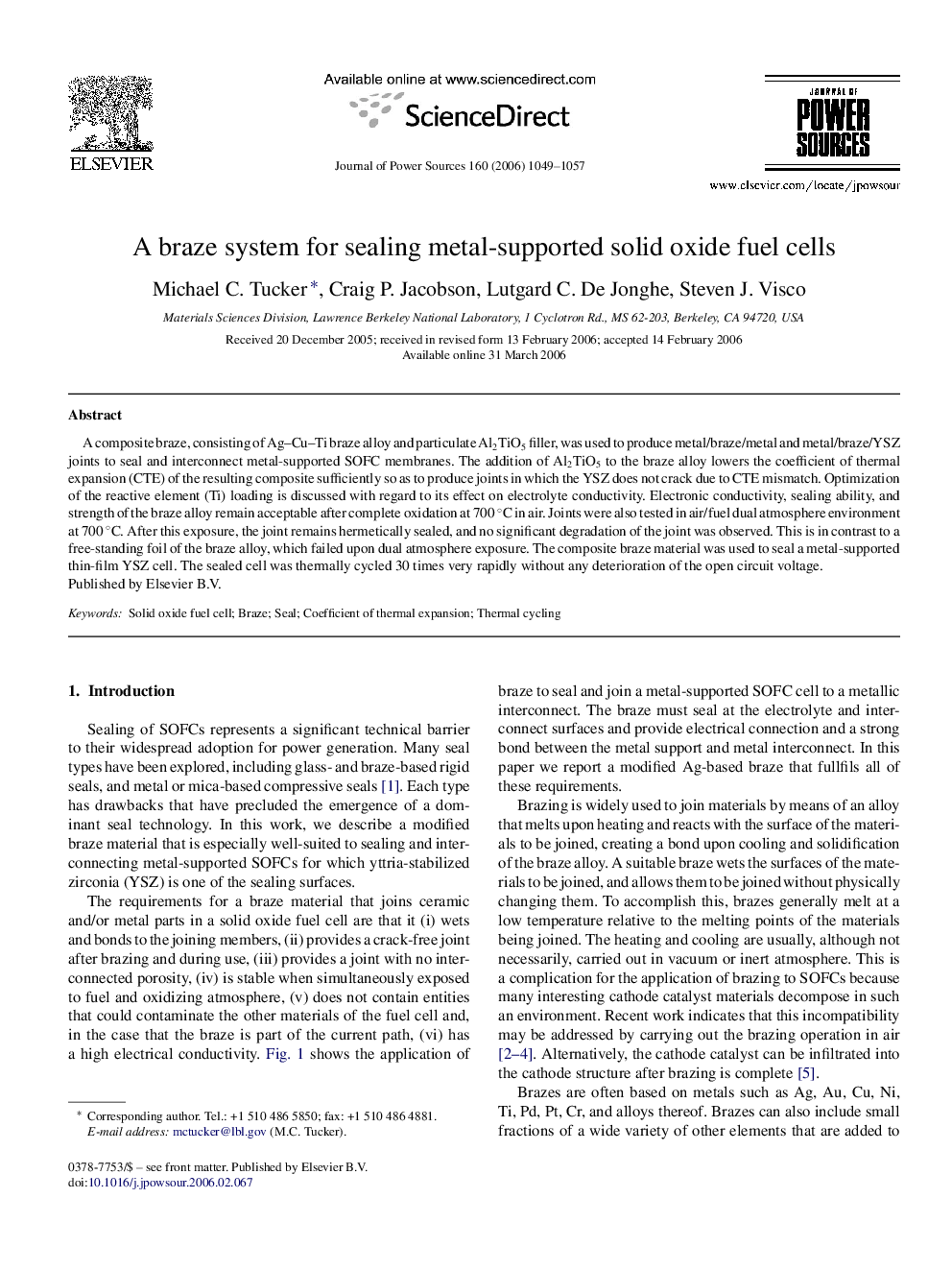| Article ID | Journal | Published Year | Pages | File Type |
|---|---|---|---|---|
| 1287163 | Journal of Power Sources | 2006 | 9 Pages |
A composite braze, consisting of Ag–Cu–Ti braze alloy and particulate Al2TiO5 filler, was used to produce metal/braze/metal and metal/braze/YSZ joints to seal and interconnect metal-supported SOFC membranes. The addition of Al2TiO5 to the braze alloy lowers the coefficient of thermal expansion (CTE) of the resulting composite sufficiently so as to produce joints in which the YSZ does not crack due to CTE mismatch. Optimization of the reactive element (Ti) loading is discussed with regard to its effect on electrolyte conductivity. Electronic conductivity, sealing ability, and strength of the braze alloy remain acceptable after complete oxidation at 700 °C in air. Joints were also tested in air/fuel dual atmosphere environment at 700 °C. After this exposure, the joint remains hermetically sealed, and no significant degradation of the joint was observed. This is in contrast to a free-standing foil of the braze alloy, which failed upon dual atmosphere exposure. The composite braze material was used to seal a metal-supported thin-film YSZ cell. The sealed cell was thermally cycled 30 times very rapidly without any deterioration of the open circuit voltage.
